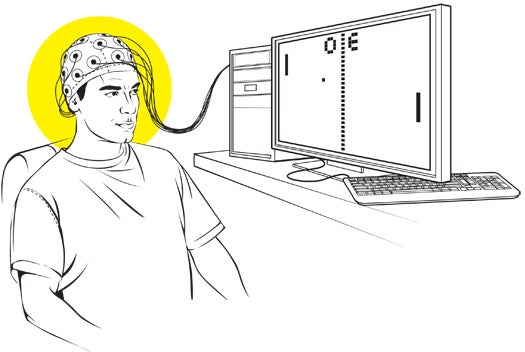A Brainwave-Controlled Version of “Pong”
We may earn revenue from the products available on this page and participate in affiliate programs. Learn more › Few...

We may earn revenue from the products available on this page and participate in affiliate programs. Learn more ›
Few video games are more basic than Pong, but Charles Moyes and Mengxiang Jiang’s version is incredibly complex. The two Cornell University students built a custom electroencephalography (EEG) device so they could control the game’s onscreen paddle with their minds.
The alpha waves that EEG machines read are faint electrical signals; Moyes and Jiang ran the EEG readings through an amplification circuit to filter and boost the signals. The amplified readings are then digitized and sent over USB to a computer running the game.
Spiking alpha waves produced during relaxation move a player’s paddle up, and smaller waves, indicating concentration, move it down. The size of the waves determines how much the paddle moves.